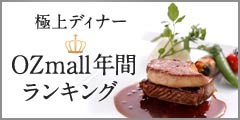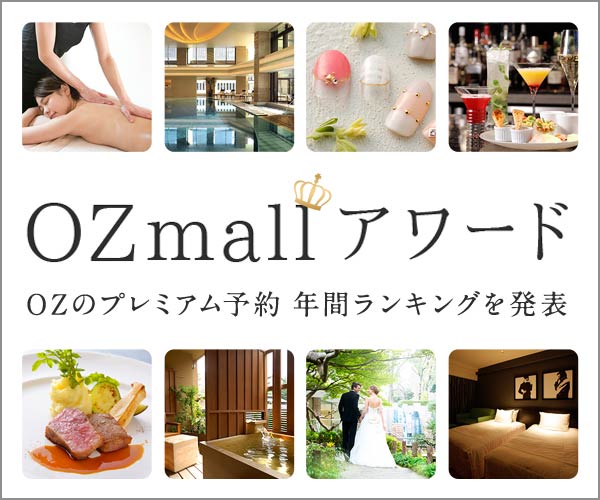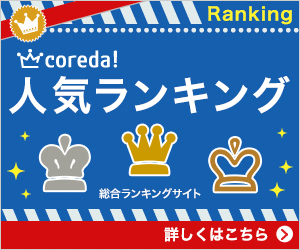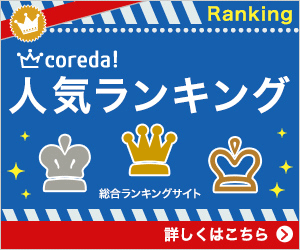新規記事の投稿を行うことで、非表示にすることが可能です。
2017年08月02日
Japanology Plus 2016 09 08 Restoring Castles
Japanology Plus 2016 09 08 Restoring Castles
https://youtu.be/JgPW4W6ystk
Published on Oct 13, 2016
Osaka Castle is a splendid sight, with its gleaming white walls and green, decoratively tiled roof complete with golden gargoyles in the shape of shachi (a mythical beast combining the head of a tiger with the body of a fish).
Visitors may wonder how it is possible that this imposing stronghold built by the famed military leader Toyotomi Hideyoshi in 1583 can remain in such pristine condition. But venture inside and a rather surprising reality reveals itself. Not only is the structure built from concrete, but the modern, carpeted interior also features a souvenir shop, computerized information points, and even an elevator. “I knew the samurai had sophisticated building techniques,” you might say to yourself, “but not this sophisticated!”
In fact the keep that stands on the site today dates back only as far as 1931, the previous fortress (itself a replacement for the original structure that was razed by the forces of the Tokugawa clan in 1615) having been destroyed by lightning in 1665.
Japan’s castles have been rebuilt and restored again and again. Expert guest Yoshihiro Senda tells us that, “Every castle is different when it comes to which keeps and watchtowers and gates are original structures and which are reconstructions…With proper upkeep structures can last centuries, or even a millennium. Without that care, they become dilapidated. So this kind of repair work has been going on for centuries.”
Nonetheless, of Japan’s 90 extant castles with keeps, 12 retain the original structures (although each of those has undergone repairs to varying degrees, some even receiving modern antiseismic foundations). Others have various other buildings on site, from guardhouses to stables, walls and baileys that are designated either as National Treasures of Japan or Important Cultural Properties.
This edition of Japanology Plus offers a fascinating insight into the recent renovation of one such citadel. The 15-meter-tall keep of Hirosaki Castle dates back to 1810 and is officially recognized as an Important Cultural Property of Japan. However, with its stone foundation ramparts beginning to buckle due to subsidence of the motte earthwork encased within, and the keep unable to stand up perfectly straight, a decision was taken to lift it using hydraulic jacks, and set it on a set of rails to be moved 80 meters to a temporary foundation while the walls are taken apart and reconstructed stone by stone.
Another historic keep is the famous “White Heron Castle” of Himeji, Hyogo prefecture. The structure dates back to the early 17th century, although there has been a fort on the site since 1303. In addition to the National Treasure status of multiple buildings on site, and further recognition for the entire castle grounds as a Special Historic Site, Himeji castle was inscribed as a UNESCO World Heritage Site in 1993.
The current structure survived air raids in World War II and the Great Hanshin-Awaji Earthquake of 1995, although it was almost completely disassembled and rebuilt one piece at a time starting in 1956, with a further five years of extensive repair work initiated in 2010 and completed in 2015.
Other castles have fared less well at times of disaster. The walls of Komine Castle in Fukushima Prefecture were severely damaged in the Great East Japan Earthquake of March 2011, and Kumamoto Castle suffered badly in the Kumamoto earthquakes of April 2016.
But as sad as such destruction is, the subsequent repairs, while very costly, do provide an opportunity for Japan’s peerless preservation skills to be passed on to the next generation of artisans.
http://www3.nhk.or.jp/nhkworld/en/tv/...
========================================
[広告]




[Reference Linking]
Lourdes Hydrogen Water Machine
https://youtu.be/GzawY76yn30
Published on Jan 27, 2014
A Video on the Lourdes Hydrogen Water Machine with an explanation about how powerful molecular hydrogen is as an antioxidant. Want to learn more about molecular hydrogen? Check out www.primoh2.com for our supplement product. Check out www.primonutra.com
https://primonutra.com/
水素水NHK
https://youtu.be/VG3TtHjZMqk
【水素水7.0】 〜水素水で悪玉活性酸素を撃退〜
https://youtu.be/swWP2s2F2Ew
========================================
https://youtu.be/JgPW4W6ystk
Published on Oct 13, 2016
Osaka Castle is a splendid sight, with its gleaming white walls and green, decoratively tiled roof complete with golden gargoyles in the shape of shachi (a mythical beast combining the head of a tiger with the body of a fish).
Visitors may wonder how it is possible that this imposing stronghold built by the famed military leader Toyotomi Hideyoshi in 1583 can remain in such pristine condition. But venture inside and a rather surprising reality reveals itself. Not only is the structure built from concrete, but the modern, carpeted interior also features a souvenir shop, computerized information points, and even an elevator. “I knew the samurai had sophisticated building techniques,” you might say to yourself, “but not this sophisticated!”
In fact the keep that stands on the site today dates back only as far as 1931, the previous fortress (itself a replacement for the original structure that was razed by the forces of the Tokugawa clan in 1615) having been destroyed by lightning in 1665.
Japan’s castles have been rebuilt and restored again and again. Expert guest Yoshihiro Senda tells us that, “Every castle is different when it comes to which keeps and watchtowers and gates are original structures and which are reconstructions…With proper upkeep structures can last centuries, or even a millennium. Without that care, they become dilapidated. So this kind of repair work has been going on for centuries.”
Nonetheless, of Japan’s 90 extant castles with keeps, 12 retain the original structures (although each of those has undergone repairs to varying degrees, some even receiving modern antiseismic foundations). Others have various other buildings on site, from guardhouses to stables, walls and baileys that are designated either as National Treasures of Japan or Important Cultural Properties.
This edition of Japanology Plus offers a fascinating insight into the recent renovation of one such citadel. The 15-meter-tall keep of Hirosaki Castle dates back to 1810 and is officially recognized as an Important Cultural Property of Japan. However, with its stone foundation ramparts beginning to buckle due to subsidence of the motte earthwork encased within, and the keep unable to stand up perfectly straight, a decision was taken to lift it using hydraulic jacks, and set it on a set of rails to be moved 80 meters to a temporary foundation while the walls are taken apart and reconstructed stone by stone.
Another historic keep is the famous “White Heron Castle” of Himeji, Hyogo prefecture. The structure dates back to the early 17th century, although there has been a fort on the site since 1303. In addition to the National Treasure status of multiple buildings on site, and further recognition for the entire castle grounds as a Special Historic Site, Himeji castle was inscribed as a UNESCO World Heritage Site in 1993.
The current structure survived air raids in World War II and the Great Hanshin-Awaji Earthquake of 1995, although it was almost completely disassembled and rebuilt one piece at a time starting in 1956, with a further five years of extensive repair work initiated in 2010 and completed in 2015.
Other castles have fared less well at times of disaster. The walls of Komine Castle in Fukushima Prefecture were severely damaged in the Great East Japan Earthquake of March 2011, and Kumamoto Castle suffered badly in the Kumamoto earthquakes of April 2016.
But as sad as such destruction is, the subsequent repairs, while very costly, do provide an opportunity for Japan’s peerless preservation skills to be passed on to the next generation of artisans.
http://www3.nhk.or.jp/nhkworld/en/tv/...
========================================
[広告]
[Reference Linking]
Lourdes Hydrogen Water Machine
https://youtu.be/GzawY76yn30
Published on Jan 27, 2014
A Video on the Lourdes Hydrogen Water Machine with an explanation about how powerful molecular hydrogen is as an antioxidant. Want to learn more about molecular hydrogen? Check out www.primoh2.com for our supplement product. Check out www.primonutra.com
https://primonutra.com/
水素水NHK
https://youtu.be/VG3TtHjZMqk
【水素水7.0】 〜水素水で悪玉活性酸素を撃退〜
https://youtu.be/swWP2s2F2Ew
========================================
2017年08月01日
2015 10 01 Japanology Plus Onsen
2015 10 01 Japanology Plus Onsen
https://youtu.be/7JBLIkXXOvQ
Published on Oct 29, 2015
===============================
女子人気のレストランだけ!OZ限定特典付きディナー



==================================
癒しの上質リラクサロンだけ!OZ限定個室プラン60分5800円



==================================


==================================
お客様の悩みから生まれた料理・掃除のアイディア商品【和田商店】



===============================


===============================
https://youtu.be/7JBLIkXXOvQ
Published on Oct 29, 2015
===============================
女子人気のレストランだけ!OZ限定特典付きディナー
==================================
癒しの上質リラクサロンだけ!OZ限定個室プラン60分5800円
==================================
==================================
お客様の悩みから生まれた料理・掃除のアイディア商品【和田商店】
===============================
===============================
2017年07月31日
BEGIN Japanology - Castles
BEGIN Japanology - Castles
https://youtu.be/F2bdqaAM9GE
Published on Feb 13, 2016
Japanese castles (城 shiro?) were fortresses constructed primarily of wood and stone. They evolved from the wooden stockades of earlier centuries, and came into their best-known form in the 16th century. Castles in Japan were built to guard important or strategic sites, such as ports, river crossings, or crossroads, and almost always incorporated the landscape into their defenses.
===============================
[NHK - Japanology Plus] Castles
https://youtu.be/Tqcezg3eYvc
Published on Jun 9, 2014
Japan's castles are masterworks of wood and stone. They bristled with defenses and functioned as symbols of authority. Today they are cherished local landmarks and popular tourist spots. With their architectural elegance and ingenious fortification, castles have long played a prominent role in Japan. Our expert guest this time is Yoshihiro Senda, the president of Nara University and an archaeologist who specializes in castles. And in Plus One, a famous Japanese castle in the heart of Tokyo.
Reference: http://www3.nhk.or.jp/nhkworld/englis...
Copyright NHK (Japan Broadcasting Corporation) All rights reserved.
===============================
女子人気のレストランだけ!OZ限定特典付きディナー



===============================
お客様の悩みから生まれた料理・掃除のアイディア商品【和田商店】



===============================


===============================
https://youtu.be/F2bdqaAM9GE
Published on Feb 13, 2016
Japanese castles (城 shiro?) were fortresses constructed primarily of wood and stone. They evolved from the wooden stockades of earlier centuries, and came into their best-known form in the 16th century. Castles in Japan were built to guard important or strategic sites, such as ports, river crossings, or crossroads, and almost always incorporated the landscape into their defenses.
===============================
[NHK - Japanology Plus] Castles
https://youtu.be/Tqcezg3eYvc
Published on Jun 9, 2014
Japan's castles are masterworks of wood and stone. They bristled with defenses and functioned as symbols of authority. Today they are cherished local landmarks and popular tourist spots. With their architectural elegance and ingenious fortification, castles have long played a prominent role in Japan. Our expert guest this time is Yoshihiro Senda, the president of Nara University and an archaeologist who specializes in castles. And in Plus One, a famous Japanese castle in the heart of Tokyo.
Reference: http://www3.nhk.or.jp/nhkworld/englis...
Copyright NHK (Japan Broadcasting Corporation) All rights reserved.
===============================
女子人気のレストランだけ!OZ限定特典付きディナー
===============================
お客様の悩みから生まれた料理・掃除のアイディア商品【和田商店】
===============================
===============================
BEGIN Japanology - Festivals
BEGIN Japanology - Festivals
https://youtu.be/nLKRzE2-lF4
Published on Sep 21, 2016
BEGIN Japanology Festivals
==================================


==================================
https://youtu.be/nLKRzE2-lF4
Published on Sep 21, 2016
BEGIN Japanology Festivals
==================================
==================================
BEGIN Japanology - Kimonos
BEGIN Japanology - Kimonos
https://youtu.be/uI76y-xXK6E
Published on May 17, 2014
Documentaire BEGIN Japanology sur le kimono (NHK World).
Ce vêtement traditionnel d'origine japonaise plusieurs fois séculaire est l'objet de nombreuses et complexes techniques textiles. De constitution carrée, il offre à l'artisan une véritable toile sur laquelle il peut librement exprimer sa créativité.
Avant d'être un vêtement, le kimono est tout d'abord un lien entre l'intérieur (personne) et l'extérieur (environnement). Ainsi, en plus d'être en harmonie avec les saisons à travers ses motifs et ses couleurs, il révèle également l'âge, le statut marital du porteur et l'occasion à laquelle il est arboré.
Le revêtir, c'est sans doute accepter d'en dire davantage sur soi; en tout cas à ceux qui sauront en décrypter les codes...
==================================
Process of Yuzen - Kyoto
https://youtu.be/M0a-cfN_ld0
Published on Jun 19, 2015
This movie introduce you to the type of Kimono making process called ”Yuzen zome”.
この映像は着物を作る技法のひとつ”友禅染め”を紹介しています。
-----------------------------------------
We need your impressions.
info@haretoke.tokyo
==================================
Core Kyoto - Kata-yuzen: The Stenciled Beauty of Dyeing [1080p HD]
https://youtu.be/HhSglFa-p-Y
Published on Dec 1, 2016
Kata-yuzen is a Kyoto yuzen dyeing method that sometimes requires as many as 100 stencils to complete a bolt of kimono fabric. The development of this method saved dyers much time and enabled mass production. The most skill-intensive task is the carving of the washi paper to create the stencils. The elaborate designs and sharp lines that are difficult to attain by hand are captivating. Discover how the Kata-yuzen techniques were refined through the Kyotoites passionate pursuit of stunning kimono.
==================================


==================================
癒しの上質リラクサロンだけ!OZ限定個室プラン60分5800円



==================================


==================================


==================================
https://youtu.be/uI76y-xXK6E
Published on May 17, 2014
Documentaire BEGIN Japanology sur le kimono (NHK World).
Ce vêtement traditionnel d'origine japonaise plusieurs fois séculaire est l'objet de nombreuses et complexes techniques textiles. De constitution carrée, il offre à l'artisan une véritable toile sur laquelle il peut librement exprimer sa créativité.
Avant d'être un vêtement, le kimono est tout d'abord un lien entre l'intérieur (personne) et l'extérieur (environnement). Ainsi, en plus d'être en harmonie avec les saisons à travers ses motifs et ses couleurs, il révèle également l'âge, le statut marital du porteur et l'occasion à laquelle il est arboré.
Le revêtir, c'est sans doute accepter d'en dire davantage sur soi; en tout cas à ceux qui sauront en décrypter les codes...
==================================
Process of Yuzen - Kyoto
https://youtu.be/M0a-cfN_ld0
Published on Jun 19, 2015
This movie introduce you to the type of Kimono making process called ”Yuzen zome”.
この映像は着物を作る技法のひとつ”友禅染め”を紹介しています。
-----------------------------------------
We need your impressions.
info@haretoke.tokyo
==================================
Core Kyoto - Kata-yuzen: The Stenciled Beauty of Dyeing [1080p HD]
https://youtu.be/HhSglFa-p-Y
Published on Dec 1, 2016
Kata-yuzen is a Kyoto yuzen dyeing method that sometimes requires as many as 100 stencils to complete a bolt of kimono fabric. The development of this method saved dyers much time and enabled mass production. The most skill-intensive task is the carving of the washi paper to create the stencils. The elaborate designs and sharp lines that are difficult to attain by hand are captivating. Discover how the Kata-yuzen techniques were refined through the Kyotoites passionate pursuit of stunning kimono.
==================================
==================================
癒しの上質リラクサロンだけ!OZ限定個室プラン60分5800円
==================================
==================================
==================================
BEGIN Japanology - Shinto Shrine
BEGIN Japanology - Shinto Shrine
https://youtu.be/nccRTm6hnug
Published on Feb 22, 2016
A Shinto shrine (神社 jinja?, archaic: shinsha, meaning: "place of the god(s)") is a structure whose main purpose is to house ("enshrine") one or more Shinto (神道 Shintō?) kami. Its most important building is used for the safekeeping of sacred objects, and not for worship. Although only one word ("shrine") is used in English, in Japanese Shinto shrines may carry any one of many different, non-equivalent names like gongen, -gū, jinja, jingū, mori, myōjin, -sha, taisha, ubusuna or yashiro. (For details, see the section Interpreting shrine names.)
================================
================================
https://youtu.be/nccRTm6hnug
Published on Feb 22, 2016
A Shinto shrine (神社 jinja?, archaic: shinsha, meaning: "place of the god(s)") is a structure whose main purpose is to house ("enshrine") one or more Shinto (神道 Shintō?) kami. Its most important building is used for the safekeeping of sacred objects, and not for worship. Although only one word ("shrine") is used in English, in Japanese Shinto shrines may carry any one of many different, non-equivalent names like gongen, -gū, jinja, jingū, mori, myōjin, -sha, taisha, ubusuna or yashiro. (For details, see the section Interpreting shrine names.)
================================
================================

